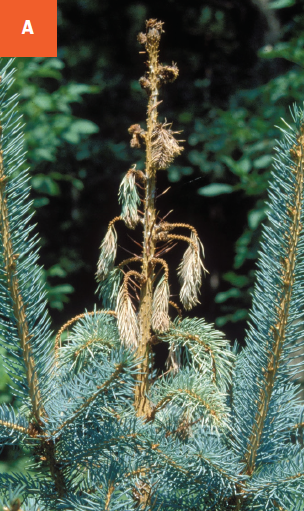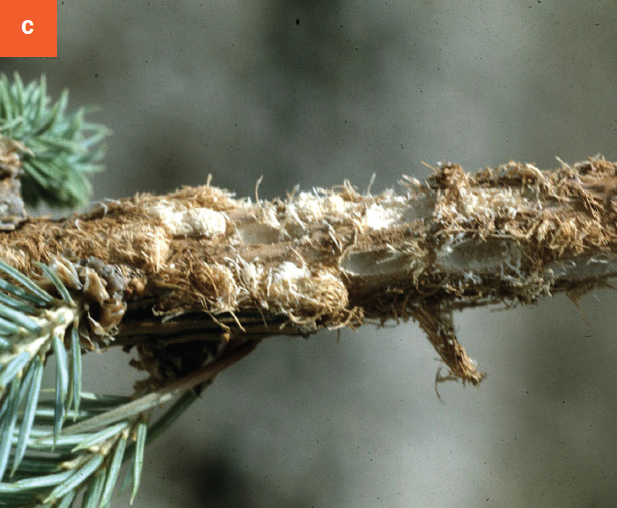White Pine Weevil
Pissodes strobi
HOST Spruce, white pine
DAMAGE/SYMPTOMS Feeding by the developing insects causes the top of the tree to suddenly wilt and die in early summer. This is often referred to as a “shepherd’s crook.” Once the top leader is killed, some side branches will change their growth habit and will grow upward to replace the dead leader.
LIFE CYCLE The weevil adults become active in early spring. They feed on the main branches near the leader and insert eggs into feeding cavities. Eggs hatch in about two weeks, and the larvae will tunnel under the bark. The larvae pupate, and adults emerge in late July through August. The adults overwinter in leaf litter and debris around spruce trees.
MANAGEMENT The infested terminal can be clipped, and a new leader can be trained. This should be done when the larvae are still inside the branch (before the end of July). Terminals should be cut only as far down as necessary to remove the weevil larvae. Destroy the pruned terminals. Rake up the needles and debris under the tree in the fall. Since the top leader and upper branches are the only parts of the tree affected by the insect, non-chemical controls are suitable. Chemical options are only recommended if necessary, and the timing of application is critical. Contact insecticides are most effective when sprayed at the terminal of the tree in the spring when adults are actively feeding and will not be as effective once the larvae have burrowed underneath the bark. Some active ingredients include permethrin, bifenthrin, and cyfluthrin. This can be difficult to time, but adult activity usually starts on warm, sunny days in late spring. A systemic insecticide (active ingredients including imidacloprid, emamectin benzoate, dinotefuran, or abamectin) can be applied as a soil drench in the spring followed by several days of watering to allow for sufficient root uptake.
A White pine weevil damage on blue spruce. B Weevil exit holes on top of tree. C Pupal chambers within the infested terminal.



